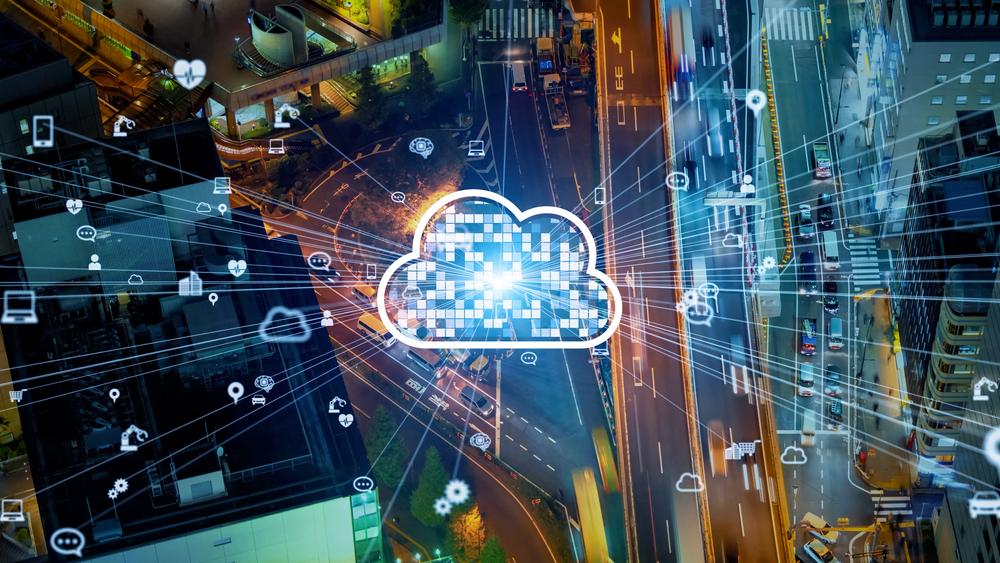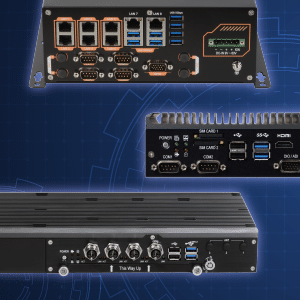The Evolution of Transportation and Logistics: Leveraging 5G Technology

Over 70 nations have deployed 5G networks, covering around one-third of the world’s population. By 2032, the economic value of 5G networks might reach USD 13.2 trillion.
5G technology alters transportation and supply chain operations through better connection, latency, and data throughput. New fleet management technologies, including real-time telematics and autonomous vehicle platooning, boost route efficiency and fuel economy with 5G transportation. The technology’s ability to handle many IoT devices raises asset tracking transparency for ongoing monitoring and controlling commodities from origin to destination.
Smart warehouses and factories utilize AR and VR to increase labor productivity and logistical accuracy, while 5G enables deployment. Plus, greater bandwidth and communication allow predictive analytics in supply chains. Meanwhile, this article discusses how 5G technologies have influenced these sectors, highlighting their benefits and efficiency.
Maximizing Benefits and Efficiency with 5G Transportation
Enhanced Collaboration
Implementing 5G transportation networks improves real-time supply chain communication and cooperation. Supply chain partners may coordinate real-time logistical activities with 5G’s 1-5 millisecond latency for fast feedback and decision-making. For example, 5G enables stakeholders to immediately discuss and update rerouting proposals amid a traffic bottleneck or weather change. It keeps everyone informed and allows them to adapt their strategy quickly for lower interruption and better supply chain efficiency.
Data-driven Decision-making
While supporting enormous data transfers and analytics, 5G transportation allows real-time, data-driven decision-making. Fast 5G networks enable logistics firms to analyze vast IoT sensor and telematics data and get actionable insights. E.g., predictive analytics may anticipate delays and recommend shipment solutions. Penske Logistics uses 5G to combine data from several sources to optimize routes and cut fuel usage via fleet management.
Operational Optimization
5G transportation reforms fleet management via better connection and data flow to boost operations. It can provide 1,000 times more mobile data per area, support 1 million connected devices per square kilometer, increase user data rates by 100 times, and decrease end-to-end latency by five times. Fleet managers can customize routes, monitor vehicle health to avoid failures, and cut unavailability while diagnosing and maintaining in real time using 5G. Real-time diagnostics and vehicle monitoring from 5G help understand vehicle usage and maintenance trends. They result in proactive upkeep and broadened vehicle lifespans.
Safety Enhancement
5G technology improves transportation safety. Using 5G’s ability to handle large amounts of data from many sources, corporations may create real-time ADAS for drivers and control centers. Connecting vehicles to city infrastructure with 5G provides rapid transmission of road conditions and impediments. It promotes driver awareness and averts accidents. 5G-enabled intelligent surveillance systems may also monitor driver behavior and weariness and inform drivers of risky driving habits for better safety.
Automation and Streamlining
5G transportation systems simplify operations by automating processes. 5G’s dependability and low latency enable autonomous vehicles and drones to transport and conduct logistical jobs without human involvement. Warehouses with 5G may employ AGVs to transfer items within to save labor and speed up processes. 5G increases robotic picking systems, which can work 24/7 for better throughput and lower order fulfillment errors.
Mission-critical Support
Mission-critical applications depend on 5G transportation networks’ trustworthy high-speed connection. Real-time data availability and decision-making are essential for autonomous vehicle navigation and emergency response systems. For example, 5G helps emergency response fleets coordinate and respond faster with real-time data connection between vehicles and control centers. Furthermore, critical applications need bandwidth and security, and 5G’s network slicing enables customized networks to match operational needs.
5 Ways to Leverage 5G Telematics for Your Business

Seamless Connectivity
Connecting vehicles to the cloud with 5G is vital for logistics transformation. 5G transportation tools provide continuous communication and rapid data synchronization between cars and central systems due to their greater data transmission rates than 4G. It lets transport vast data, including vehicle performance measurements and environmental variables, without delay. Truck engines may provide status information every second for instantaneous fuel usage and route selection modifications. In heavily congested metropolitan areas or distant places where 4G networks struggle, 5G promotes connection dependability.
Proactive Maintenance
Companies may switch from reactive to proactive maintenance using 5G transportation solutions. Vehicle diagnostic data allows real-time diagnosis and care to cut absenteeism. 5G’s fast data transfer lets sensors promptly identify engine irregularities and tire wear. It lets fleet managers plan maintenance using vehicle health data rather than fixed intervals. It raises vehicle component durability and lowers unplanned maintenance and breakdown expenses.
Comprehensive Fleet Management
5G gives fleet managers real-time insight into all fleet activities. 5G’s high bandwidth and low latency allow fleet managers to track vehicle whereabouts, driver behavior, and cargo conditions from a dashboard. The method allows refined telematics systems to handle hundreds of automobiles simultaneously and provide precise performance insights. A logistics business may minimize idle periods and delivery timelines by evaluating traffic data and rerouting suggestions to drivers’ onboard devices utilizing 5G transportation solutions.
Autonomous Operations
5G is essential for logistics autonomous car safety and efficiency. Low latency and superb reliability are needed for split-second communication between autonomous cars, control centers, and vehicle-to-vehicle communication. It facilitates convoluted platooning, where vehicles travel at optimal distances to preserve fuel and improve road capacity. In testing, 5G-supported autonomous trucks might cut spacing errors to less than half a meter at speeds above 80 km/h while optimizing security and effectiveness.
Intelligent Transportation Systems
5G technology redefines intelligent transportation systems that increase traffic flow and safety. Traffic management systems can interpret and communicate real-time data from sensors and cameras using 5G’s URLLC. It lets traffic lights alter depending on traffic circumstances for lower congestion and better trip efficiency. Intelligent city apps, including real-time environmental monitoring and emergency response systems, employ enormous arrays of IoT devices to boost urban living conditions, and 5G may help them expand.
The Benefits of 5G for Industrial Edge Computers
Instantaneous data processing and decision-making at the network’s edge strengthens transportation and logistics systems when 5G is combined with industrial edge computers. For better route planning and fleet management, industrial edge devices can instantly analyze streaming data from linked sensors and IoT devices. The European Automobile Manufacturers’ Association found that autonomous vehicle platooning may lower CO2 emissions by 10%. 5G’s high data throughput—10 Gbps—allows simultaneous transmission of large-volume telemetry data for predictive care and real-time supply chain changes.
Network slicing can also segment a single physical 5G network into multiple virtual networks to prioritize critical data from industrial-edge computers over less sensitive data. It helps implement complicated logistical operations, including those in intelligent factories. 5G-connected robots and automated systems employ continuous and quick data interchange to improve production procedures and reduce outages.
In this regard, SINTRONES’ 5G solutions for logistics systems are an innovative choice.




